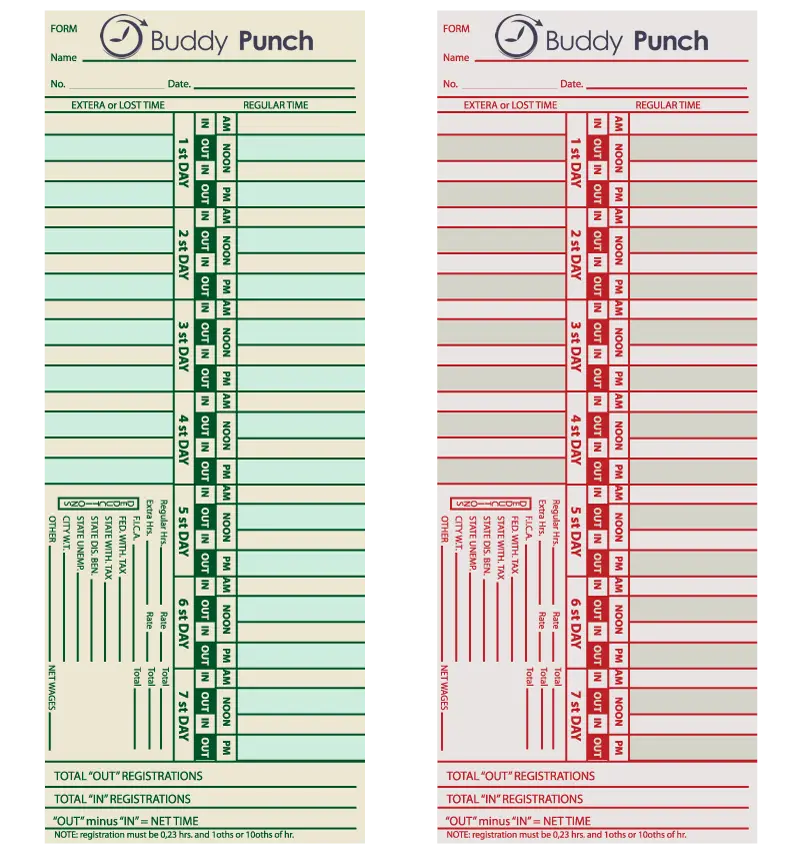The Evolution of Time Tracking

Time tracking for hourly employees may seem like a recent innovation –but the concept of tracking time has been around for millennia.
In fact, some of the oldest records that we have referencing wages include The Code of Hamurabbi, a Babylonian treatise dating back to 1772 BC.
Ever since the advent of billable hours, humans have been tracking time for billing –and payment purposes. Employee time tracking solutions also allow business owners to run reports, calculate profitability, set targets, and make projections.
While the standard for a considerable amount of time was paper timesheets, today’s time tracking systems are lean, mean –and efficient. Optimized with features that allow for verified worker sign in –to prevent time theft, they also sync up with payroll processing systems, which saves time while also reducing the chance of errors.
Modern time clock employee tracking solutions are invaluable –but time tracking hasn’t always been so intuitive. Let’s take a look at the history of time tracking –from paper to web-based software –and see some of the changes this discipline has gone through to bring us to where we are today.
Paper Timesheets
Paper timesheets were the standard for time tracking for many years. Paper sheets are portable –and easy to use –whether in the form of a template or a scrap paper with some notes scrawled on it. While paper timesheets have been around for years –and are still used in many companies today, do have their own set of drawbacks. They can be time-consuming to process; requiring you to input the numbers manually in order to process payroll, or work with the data. Then, of course, there’s the issue of handwritten paper timesheets being notoriously difficult to decipher –and the fact that there’s always a chance of paper getting lost, damaged, destroyed –or even fabricated.
The Time Clock
The first time clock was developed in the 1880s, by a New Yorker named Willard Bundy. Time clocks are still used in many offices throughout the country –although the first Bundy Clock was a grandfather-clock innovation with a keyhole for workers to use individual keys to track their time. Innovative!
Excel Timesheets
Excel timesheets took things to a new level by allowing just about every computer user access to easy-to-use spreadsheets –that could be used as timesheets. Many companies started using Excel to track their employees’ time –and while it made for an easy-to-use, accessible option, it still isn’t ideal. The data still needs to be entered manually, which takes time and also increases the chance of error. Then there are issues with the program itself. While Excel isn’t hard to learn, in order to take advantage of some of the more advanced reporting options, you will need to master some of the more difficult aspects of Excel.
Desktop Software
Next, the innovation of desktop software –which allowed employers the ability to track their employees’ time from a computer-based program –that was simpler to use than Excel. While this certainly is an improvement, it still has its pitfalls. The desktop-based software means that there is no simple way to sync the information from one device to another. It is all stationed on one computer, which means that if you don’t have your own device, you might as well be using that old fashioned notepad and pencil.
Web Based Software
While the internet first made an appearance some 25 years ago, employee online mobile apps didn’t make an entrance until a few years ago. Today, there is an explosion of companies that are making the switch to web-based time tracking software and these systems are the go-to tracking option of choice. They offer flexibility, allowing you to access data no matter what device you’re on, and also ensure accuracy –with verified sign-in features, they help to prevent time theft or to keep workers from exaggerating the number of hours they work –something that 43 percent of hourly workers admitted to doing, according to time and attendance systems reviews firm Software Advice. The only downside is that with so many programs available, it can be a challenge to choose the right one for your company –so make your decision carefully and ensure you find one that has all of the features that you’re after.
It’s fascinating to look at the chances that time tracking has gone through over the years. And as you can see, things are certainly moving in the right direction. The time tracking tools that we have today are vastly superior to the systems of yesteryear –and only continue to improve as the years go by. Companies that want to stand the test of time should look to implement systems and features that will help them to stay current and competitive in today’s constantly changing world –and that includes implementing a robust and up-to-date time tracking system that makes payroll and billing as simple, efficient, and accurate as it can be.
